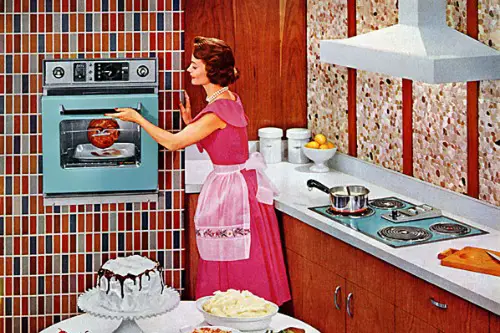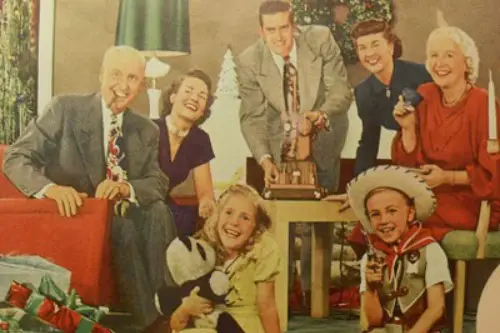1. Gendered Expectations for Jobs

For decades, certain jobs were seen as “appropriate” for men and others for women. You saw this in everything from office positions to manual labor, where societal expectations dictated who could or couldn’t do what. Thankfully, according to Business News Daily, this idea is becoming a thing of the past, as more people of all genders pursue careers based on passion and skill rather than outdated norms. This shift is making the workplace more inclusive and equitable, allowing everyone to thrive regardless of gender.
In addition, we’re seeing a growing number of women breaking into fields traditionally dominated by men, like engineering, construction, and technology. This move is reshaping industries and opening doors for younger generations. It’s clear that more women are being seen as leaders in spaces that used to be gender-segregated. As a result, we’re starting to witness true equality in the workforce, and it’s about time.
2. The Obligation to Get Married

For years, society told us that marriage was the ultimate goal, and that it defined success in relationships. If you weren’t married by a certain age, there was pressure and judgment. But according to The Hill, with changing attitudes around relationships and individuality, people are increasingly rejecting this idea. Many are opting for long-term partnerships without the need for a legal certificate to validate their bond.
Marriage is no longer seen as a must-have, and more people are choosing other forms of commitment, or simply remaining single, and living fulfilling lives. The decision to marry is now more personal and less influenced by societal standards. Relationships are moving away from traditional molds, allowing individuals to define their own happiness. As a result, the stigma surrounding singlehood and non-marital partnerships has significantly diminished.
3. Wearing a Suit to Work

The classic office uniform—suit, tie, and dress shoes—is no longer mandatory in many workplaces. The shift toward more casual work environments is a major change in how we view professionalism, according to TIME Magazine. With the rise of tech companies, creative industries, and even remote work, comfort has taken priority over strict dress codes. Now, we see employees choosing smart casual or even athleisure looks in lieu of the stiff, formal attire.
This change is not just about fashion; it’s about comfort and efficiency. Many argue that when employees feel comfortable in their clothes, they’re more productive and happier at work. In industries like tech and design, there’s also a push to prioritize individual expression. It’s a sign of how the workplace is evolving, where creativity is valued more than conforming to old standards.
4. “The Man Pays for the Date” Tradition

Ah, the age-old idea that the man should always pick up the check on a date. This expectation has gradually been challenged, especially as gender roles have evolved. People now prefer splitting the bill or alternating, and this has become more common in modern dating culture. It’s refreshing to see that relationships are moving towards equality, where both partners share the financial responsibility.
This shift speaks to broader changes in the way we view relationships and respect for each other’s autonomy. More women are financially independent, so the assumption that men should always pay is becoming outdated, according to The New York Times. Dating is evolving to focus on mutual respect and collaboration, rather than rigid rules. This norm’s decline is part of a larger movement toward gender equality and financial independence.
5. The Need for a 9-to-5 Work Schedule

Gone are the days when everyone was expected to work a rigid 9-to-5 schedule at a physical office. With advancements in technology and the global rise of remote work, people are embracing more flexible work hours, according to The New York Post. Many industries have recognized that productivity is less about clocking in and more about delivering results. Employees now have the freedom to set their own hours and balance work with their personal lives.
This new approach to work culture is also helping to create a healthier work-life balance. It’s not just about flexibility for flexibility’s sake, but also about creating environments where people are encouraged to work when they’re most efficient. Companies are increasingly offering remote positions, and the idea of commuting to an office is starting to feel like a thing of the past. It’s a norm that’s slowly but surely disappearing in favor of more freedom and autonomy for workers.
6. Stigmas Around Therapy and Mental Health

Once upon a time, seeking therapy was stigmatized, seen as a sign of weakness or something only “crazy” people did. But in recent years, there’s been a growing recognition of the importance of mental health, leading to greater acceptance of therapy. It’s no longer unusual for people to talk openly about their emotional well-being and seek professional help when needed. This shift has been crucial in reducing the shame often associated with mental health struggles.
As therapy becomes more mainstream, younger generations are leading the charge in normalizing it. The idea that mental health is just as important as physical health is finally taking root in American culture. People are less afraid to ask for help, and there’s been an increasing number of resources available for those seeking therapy. This norm is dying because society now understands that taking care of your mental health is vital for overall well-being.
7. The Need for Formal Titles in Conversation

Using titles like “Mr.,” “Mrs.,” or “Doctor” used to be standard, especially in formal or professional settings. Over time, however, there’s been a move away from such rigid forms of address in favor of first names or even more casual greetings. The trend toward using first names, even in professional settings, reflects a shift toward a more egalitarian society. It’s also a reflection of how we’ve started to place more emphasis on the person rather than their social status.
This change has helped to make workplaces and social environments feel less hierarchical and more inclusive. People appreciate being addressed by their first name, regardless of their rank or job title, because it feels more authentic. The shift is particularly prominent in industries where collaboration is key, and formality can often create unnecessary barriers. Ultimately, this trend fosters a culture of mutual respect and equality.
8. The Pressure to Have Kids

The idea that every couple or individual should have children at some point is slowly fading. While it used to be considered an inevitable part of life, more people are choosing to live child-free, and society is becoming more accepting of that choice. Whether it’s due to personal preference, career goals, or environmental concerns, the pressure to start a family is not as strong as it once was. This is especially true for millennials and Gen Z, who are redefining what it means to build a life.
It’s no longer seen as selfish or strange to choose not to have children, and this shift in mindset is freeing for many. People are increasingly exploring other life goals, such as travel, education, or simply focusing on personal growth. Family structures are becoming more diverse, and it’s understood that having children doesn’t define one’s success or happiness. This social norm’s decline is a sign of greater acceptance of individual life choices.
9. The Idea of “Workaholism” Being Admirable

In the past, being a workaholic was often seen as a badge of honor. People who worked long hours were respected for their dedication and commitment to their careers. However, attitudes are changing as society increasingly recognizes the harmful effects of overwork on physical and mental health. More companies are promoting the importance of taking time off and finding a balance between work and personal life.
Work-life balance is now seen as a necessary part of a sustainable career, rather than something that should be sacrificed for success. The burnout that often accompanies overworking is becoming less acceptable, and many businesses are instituting policies that prioritize employee well-being. People are beginning to realize that long-term productivity is tied to having time to recharge. As a result, “workaholism” is slowly being replaced by a healthier view of work.
10. Dressing Up for Church or Religious Services

For many, attending church once meant putting on your best suit or dress. This was seen as a way to show respect for the service and the sacred space. In recent years, however, more churches have embraced casual dress codes, encouraging people to come as they are. The idea that you must wear formal clothes to worship is no longer a strong social expectation in many religious communities.
The shift reflects a broader societal move toward prioritizing personal comfort over traditional norms. It also shows that spirituality and faith can be expressed in ways that feel genuine to each individual. As a result, people feel more welcome to attend services, regardless of their attire. It’s no longer about meeting a dress code but about fostering a more inclusive, non-judgmental environment.
11. The “Good Old Days” of 1950s Family Roles

The traditional 1950s family model—father as the breadwinner, mother as the homemaker—is a relic of the past. Today, families come in all shapes and sizes, and roles are more fluid. Dual-income households are the norm, and the idea that women should stay home and raise children while men go to work is increasingly outdated. People now see the value in sharing responsibilities at home and redefining what family life can look like.
This shift also speaks to broader societal changes, such as the advancement of women’s rights and increasing recognition of diverse family structures. The need for both partners to contribute financially has also made the single-income family model less practical. With more women in the workforce and greater flexibility in family roles, the rigid roles of the 1950s no longer make sense. This evolving dynamic helps families thrive in ways that are more equitable and realistic for today’s world.
12. Judging People Based on Their Appearance

In the past, judgments about people’s character were often based on their physical appearance, from their clothes to their body type. The idea that “first impressions are everything” has been slowly chipped away as people become more open-minded and aware of how superficial this approach is. Today, there’s more emphasis on getting to know the person beyond their looks. Society is recognizing that someone’s worth and abilities should not be determined by how they look.
The body positivity movement and greater acceptance of diverse appearances are reshaping social attitudes. People are now more likely to focus on a person’s values, intelligence, and kindness rather than their outward appearance. As a result, judgments based solely on looks are becoming increasingly irrelevant. This change allows for more meaningful connections and helps break down harmful stereotypes.
13. The Stigma Around Non-Traditional Living Situations

Once upon a time, living arrangements like cohabitation before marriage, living with roommates well into adulthood, or choosing not to own a home were viewed with skepticism. These days, people are embracing alternative living situations as valid and practical options. With skyrocketing housing costs and shifting priorities, fewer people feel the need to conform to the traditional expectation of owning a house or settling down in one place.
The rise of flexible living, such as tiny homes, co-living spaces, and digital nomadism, reflects a shift in values toward freedom, experiences, and financial independence. Young people are leading the way by opting out of homeownership and focusing on what suits their lifestyle. It’s a sign that society is moving away from rigid expectations about what makes a “successful” living situation. As more people adopt alternative lifestyles, the stigma around non-traditional living is fading fast.


